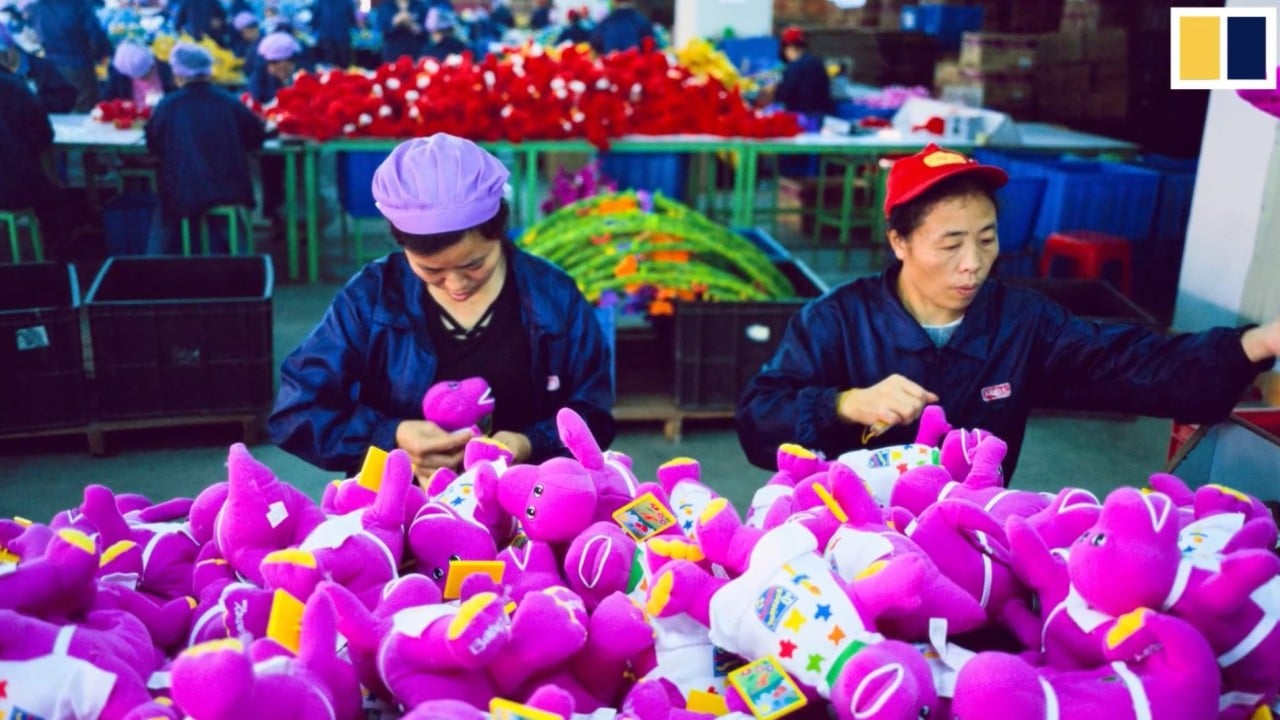
Coronavirus: China needs GDP growth of about 3 per cent in 2020 to meet job goals, analysts say
- Beijing wants to keep the urban unemployment rate steady at about 6 per cent while creating 9 million jobs this year
- The central government will need to ensure economic growth of about 3 per cent and steady an economy badly damaged by the coronavirus, analysts say
Though China has not set an economic growth target for 2020, analysts say Beijing will need to ensure a growth rate of about 3 per cent to steady the economy and achieve its employment goals.
With the economy unlikely to make a rapid recovery from the 6.8 per cent contraction in the first three months of the year, Chinese Premier Li Keqiang told the NPC that Beijing will focus on maintaining an urban unemployment rate of around 6 per cent and creating 9 million new jobs.
Zhu Min, former deputy managing director of the International Monetary Fund and head of the National Institute of Financial Research at Tsinghua University in Beijing, told state-owned broadcaster CCTV that China would need to grow between 2 per cent and 3 per cent this year to meet the government’s goals of stabilising “employment, finance, foreign trade, foreign investment, investment and [business] expectations”.
While the government decided not to set an economic growth target, it did not mean it was not important, analysts at the Bank of China said in research published last week.
“In fact, the GDP growth target has been integrated into the fiscal, monetary and other policy targets,” the analysts said. “It is calculated based on job security, poverty alleviation, the fiscal deficit and risk mitigation.
“The implied target of China’s economic growth in 2020 is 3 to 3.5 per cent.”
Government stimulus will provide some relief to businesses to help them survive the hardships but it will take time to slowly overcome weak demand for consumer goods and services, as well as weakness in hiring in relevant sectors
Many of the jobs created this year would be for infrastructure projects, which are often dominated by large state firms as they have more market share in the heavy industries and construction than private firms.
Rory Green, China economist at London-based research TS Lombard, said the government plans to expand cheap lending to small and medium-sized firms “to keep them solvent” is likely to only stabilise their employment situation. The infrastructure stimulus “will do the heavy lifting in terms of job creation”, he added.
Wary of the dire employment situation in the private sector, Beijing has introduced measures to aid small businesses, including tax and fee cuts as well as loan payment deferral schemes.
PBOC vice-governor Pan Gongsheng said the programme would provide interest-free loans to small banks if at least 40 per cent of their lending was to small firms. The new loans will not require collateral or guarantees, removing a key hurdle for borrowers, central bank officials said.
Even though China’s big state-owned banks have been asked to step up lending support for small business, they are not included in the new scheme, Pan said.
As consumer demand is still reeling from the effects of the pandemic, companies in services such as retail, hospitality and the entertainment sectors have taken a big blow over the past few months.
Tommy Wu, lead economist at Oxford Economics, said those businesses will face the most difficulty to recover, as consumers are now more cautious with spending. Although businesses may have provided incentives to encourage shopping, they have not had a lasting effect, he added.
“It is not that easy to boost consumption in a sustainable manner as long as many [consumers] still have doubts over their income and job prospects,” he said.

01:38
What is gross domestic product (GDP)?
“Government stimulus will provide some relief to businesses to help them survive the hardships, but it will take time to slowly overcome weak demand for consumer goods and services, as well as weakness in hiring in relevant sectors.”
“On the export front, while lockdowns are starting to be lifted globally, it will take a while for global supply chains to restart fully, so demand for Chinese goods will remain sluggish in the near term,” Wu said.
“In all, government stimulus will help, but only up to a certain degree. We will need to wait for domestic and global demand to recover in the upcoming months to meaningfully boost employment in the second half of this year.”


